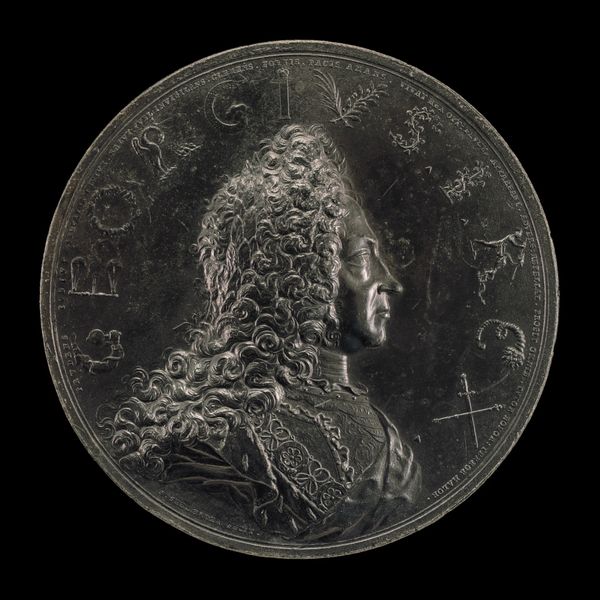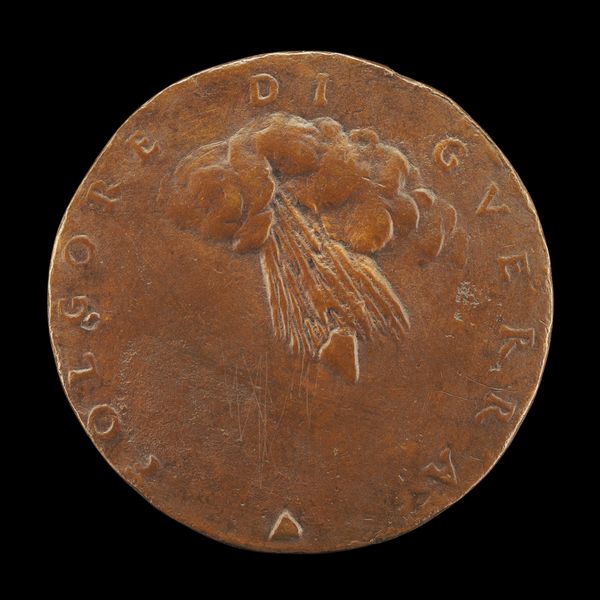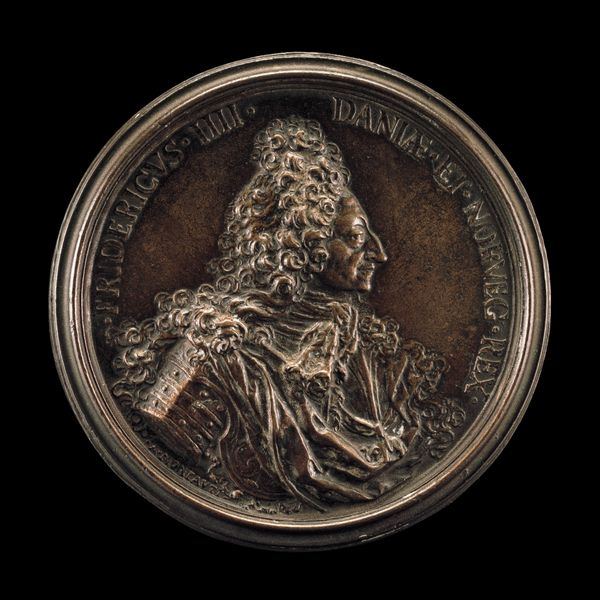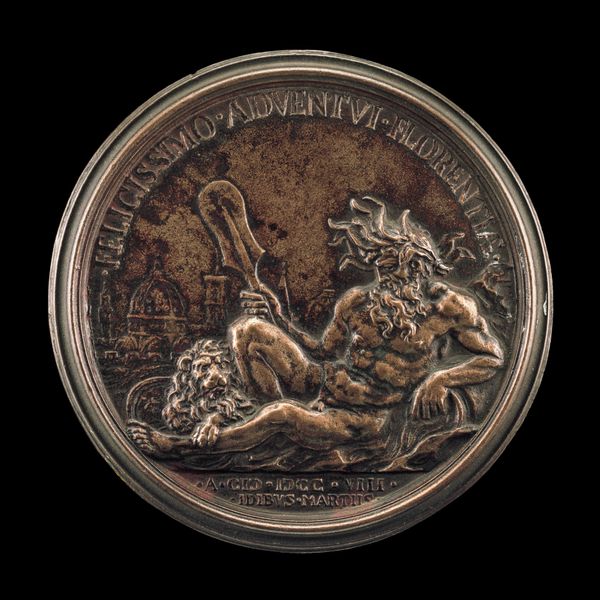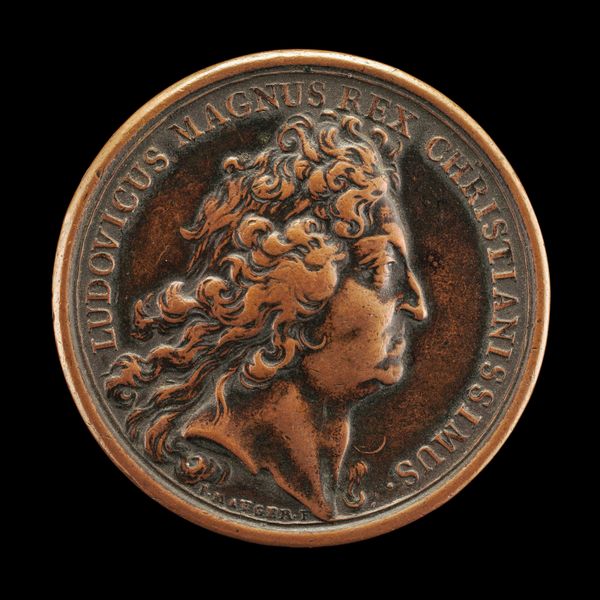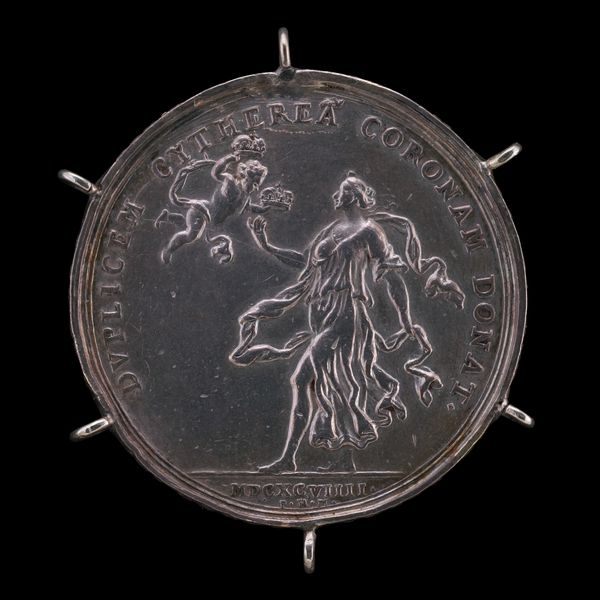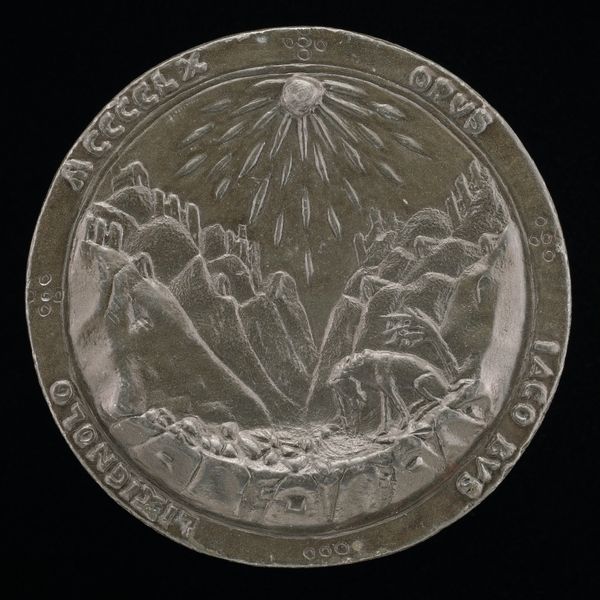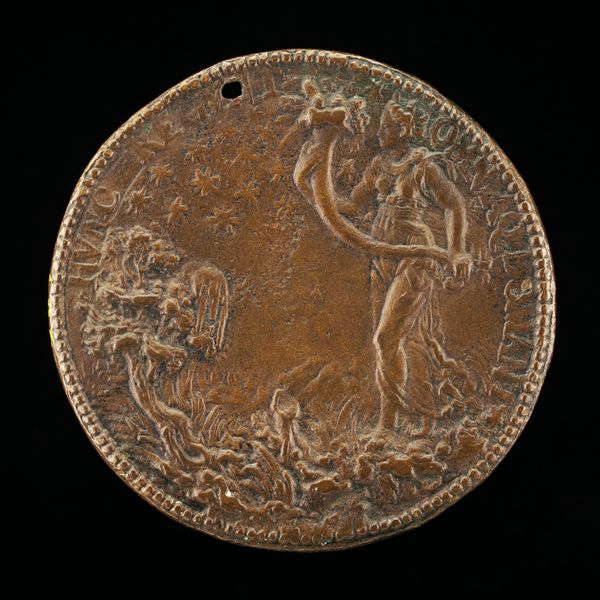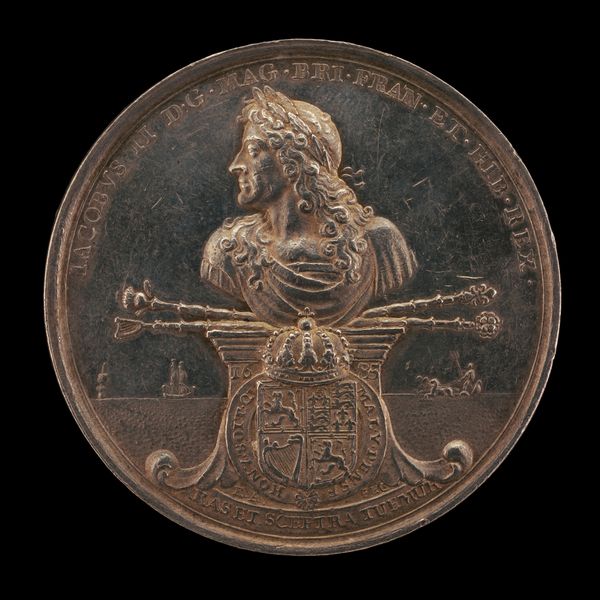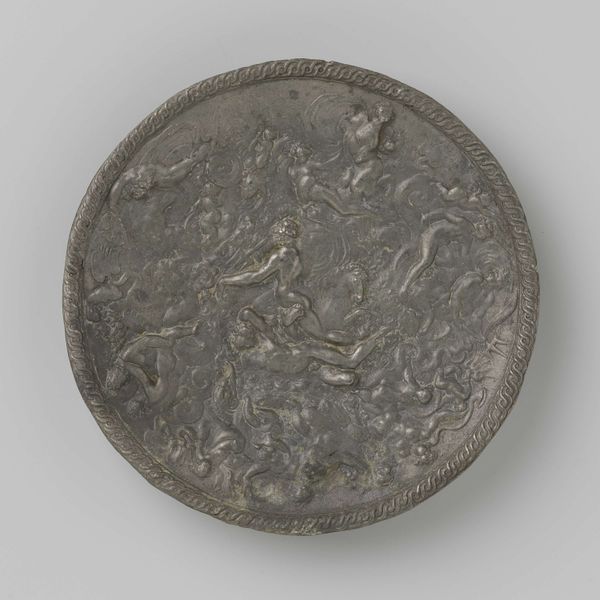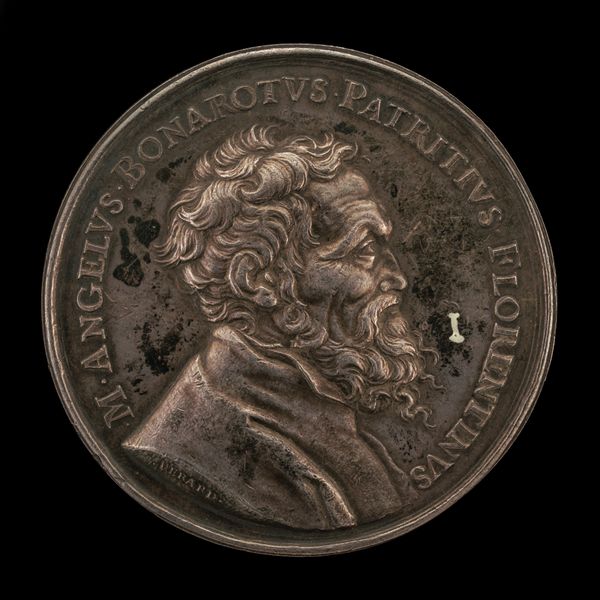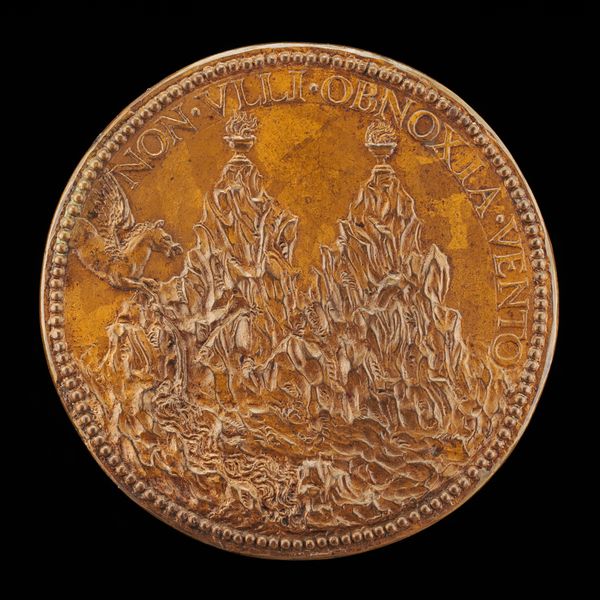![Leafless Branches [reverse] by Antonio Francesco Selvi](/_next/image?url=https%3A%2F%2Fd2w8kbdekdi1gv.cloudfront.net%2FeyJidWNrZXQiOiAiYXJ0ZXJhLWltYWdlcy1idWNrZXQiLCAia2V5IjogImFydHdvcmtzL2VkNWRiMmVmLTIxY2UtNDkzYy1hNWZlLWQ2NjMzY2M5YmMzNi9lZDVkYjJlZi0yMWNlLTQ5M2MtYTVmZS1kNjYzM2NjOWJjMzZfZnVsbC5qcGciLCAiZWRpdHMiOiB7InJlc2l6ZSI6IHsid2lkdGgiOiAxOTIwLCAiaGVpZ2h0IjogMTkyMCwgImZpdCI6ICJpbnNpZGUifX19&w=3840&q=75)
relief, bronze, sculpture
#
portrait
#
sculpture
#
relief
#
bronze
#
11_renaissance
#
sculpture
#
statue
Dimensions: overall (diameter): 7.73 cm (3 1/16 in.) gross weight: 94.6 gr (0.209 lb.) axis: 12:00
Copyright: National Gallery of Art: CC0 1.0
Curator: Welcome. Let's discuss this intriguing bronze relief, "Leafless Branches [reverse]" created by Antonio Francesco Selvi sometime between 1739 and 1744. Editor: My initial impression is of starkness, almost severity. The dark bronze and leafless branches evoke a sense of winter or perhaps even loss. The composition feels deliberately restrained, focused on texture rather than exuberant detail. Curator: It’s fascinating to consider the socio-economic context. Bronze casting in the 18th century was a laborious process, often reliant on exploited labour. The production itself speaks volumes about patronage and resources available to Selvi. It asks a viewer to reflect on not just what is depicted, but how the object came into existence and who benefitted. Editor: True, but the formal qualities also demand attention. The circular format focuses the eye on the central design, emphasizing the rhythmic interplay of the branches. Notice how Selvi uses varying depths of relief to create a sense of spatial depth, drawing the eye into the composition. Curator: Precisely, the use of bronze invites thoughts about the status and dissemination of art. Who would have commissioned it? Was this for private consumption by a wealthy elite, or part of a wider tradition of public statuary influencing contemporary taste? Editor: It also highlights texture. The patina of the bronze is integral, deepening shadows and giving the surface complexity. This manipulation of materiality amplifies the emotional impact; smooth versus rough surfaces guiding our perception. It invites contemplation not just intellectually but sensually, which some might call an elevated form of art. Curator: The relief certainly exists within its historical and social reality. For instance, the specific techniques involved: Did Selvi employ assistants, apprentices? Examining archival sources could reveal invaluable insight. Editor: Regardless of process, it possesses an inherent aesthetic harmony in line, shape and tone. Even isolated from any social interpretation, we cannot ignore the careful distribution of elements to create balance or the sensitivity in rendering texture—those details elevate mere object into artwork. Curator: An artwork never exists in a vacuum. This exploration illustrates the multifaceted dialogues that an object can provoke. Understanding how the artwork has been shaped also leads us to explore society around it. Editor: A fitting insight to wrap this up. The bronze work really emphasizes how material, form, context combine to form visual expression and stimulate responses—historical, sociological, or material.
Comments
No comments
Be the first to comment and join the conversation on the ultimate creative platform.
